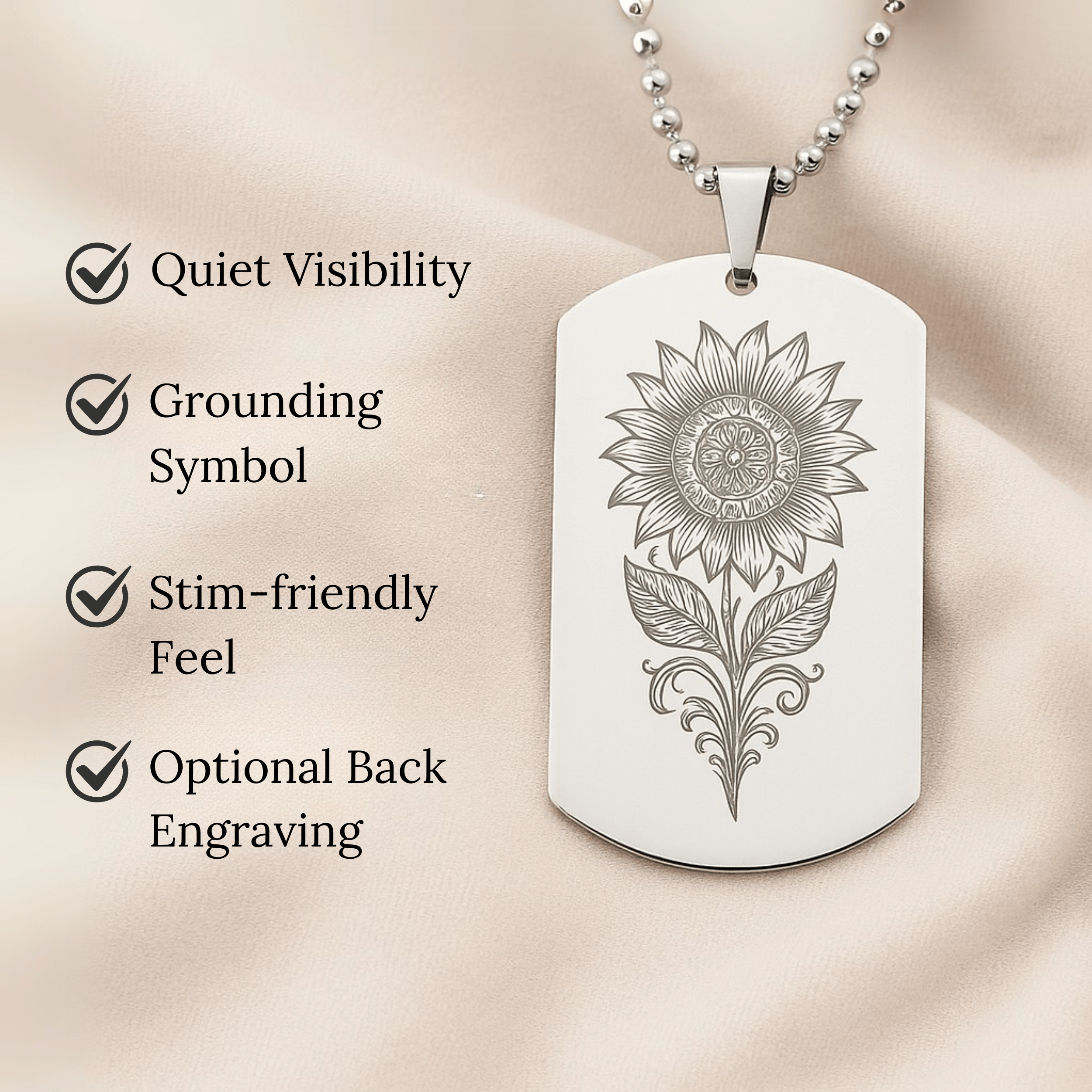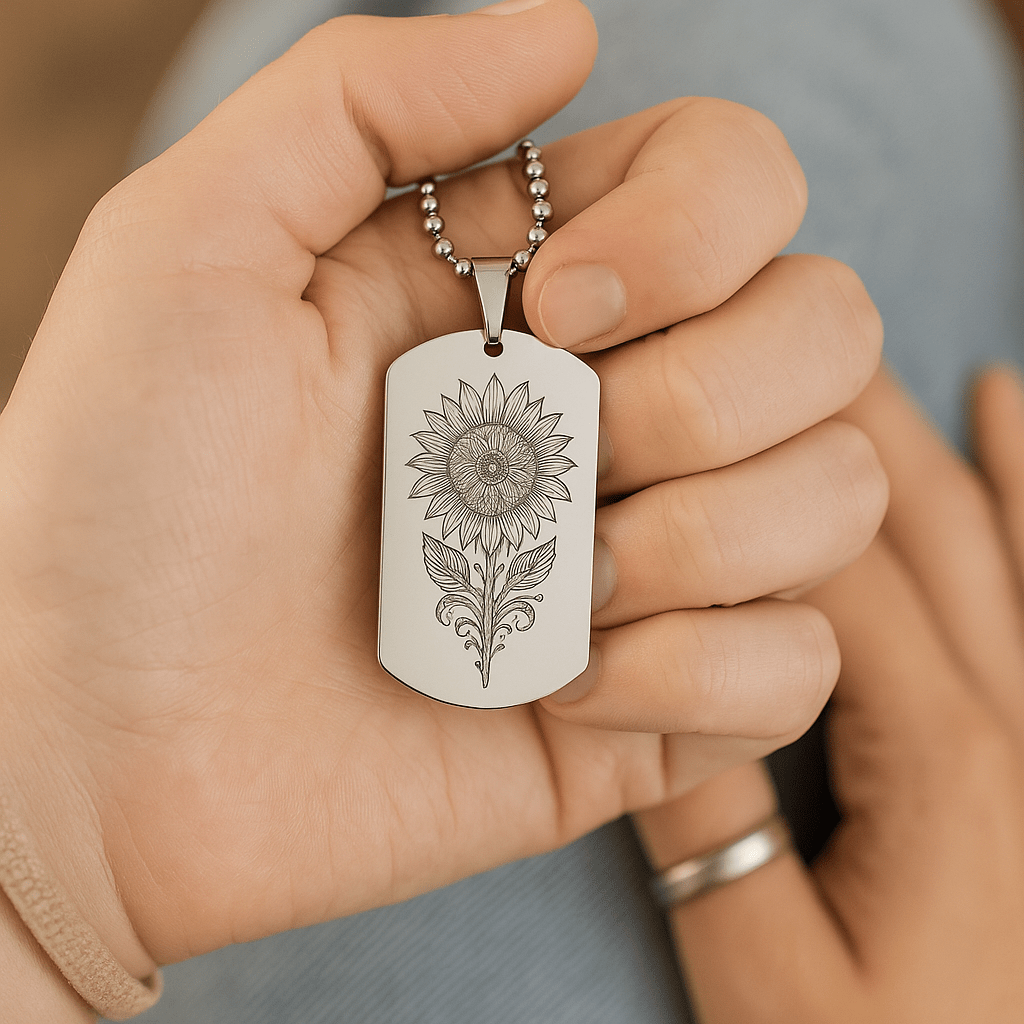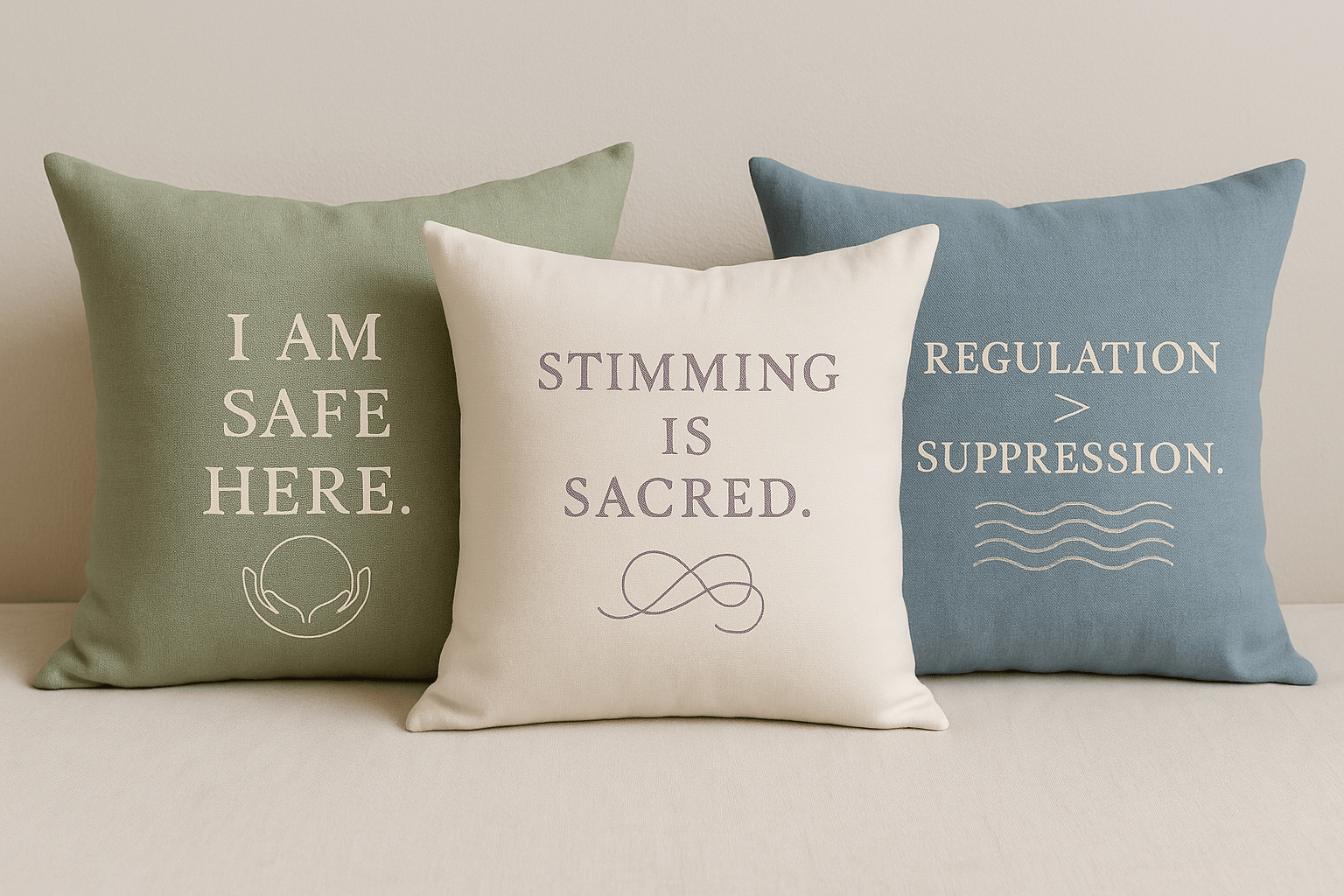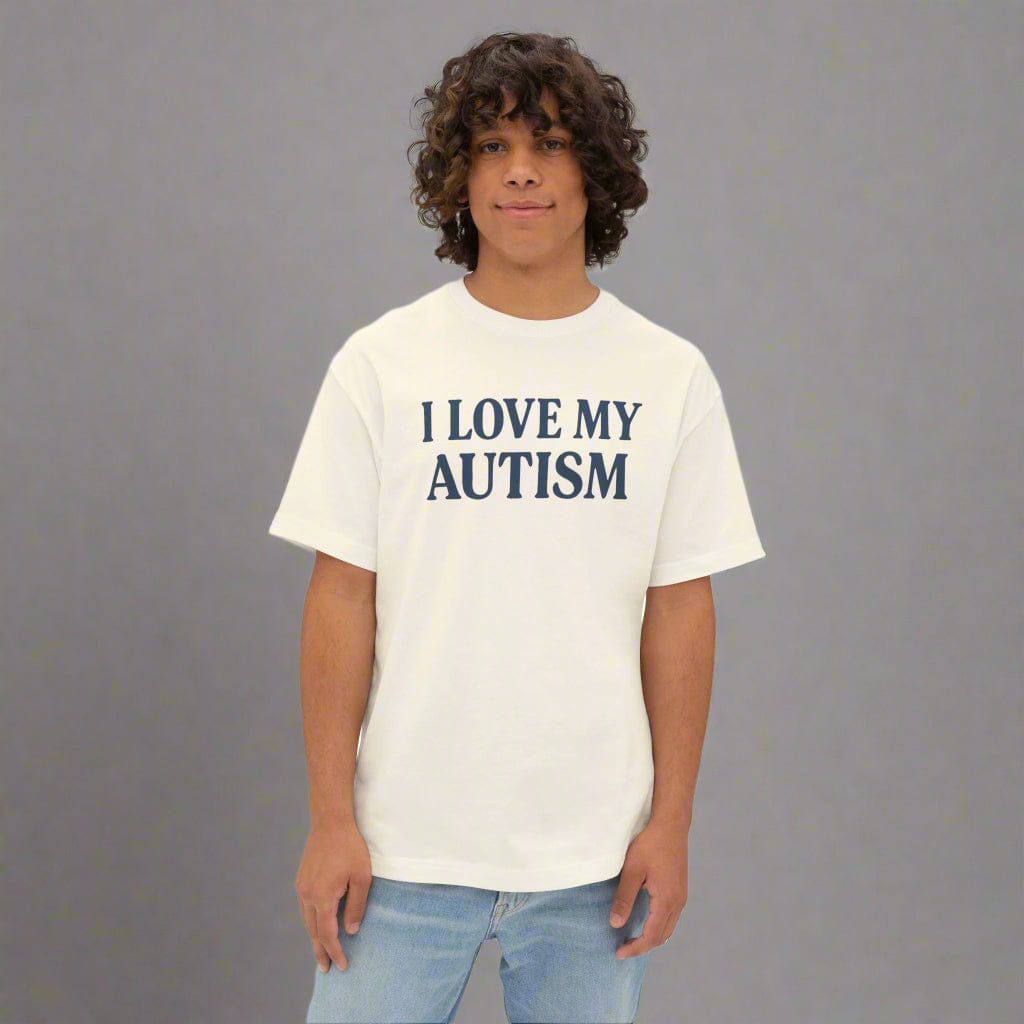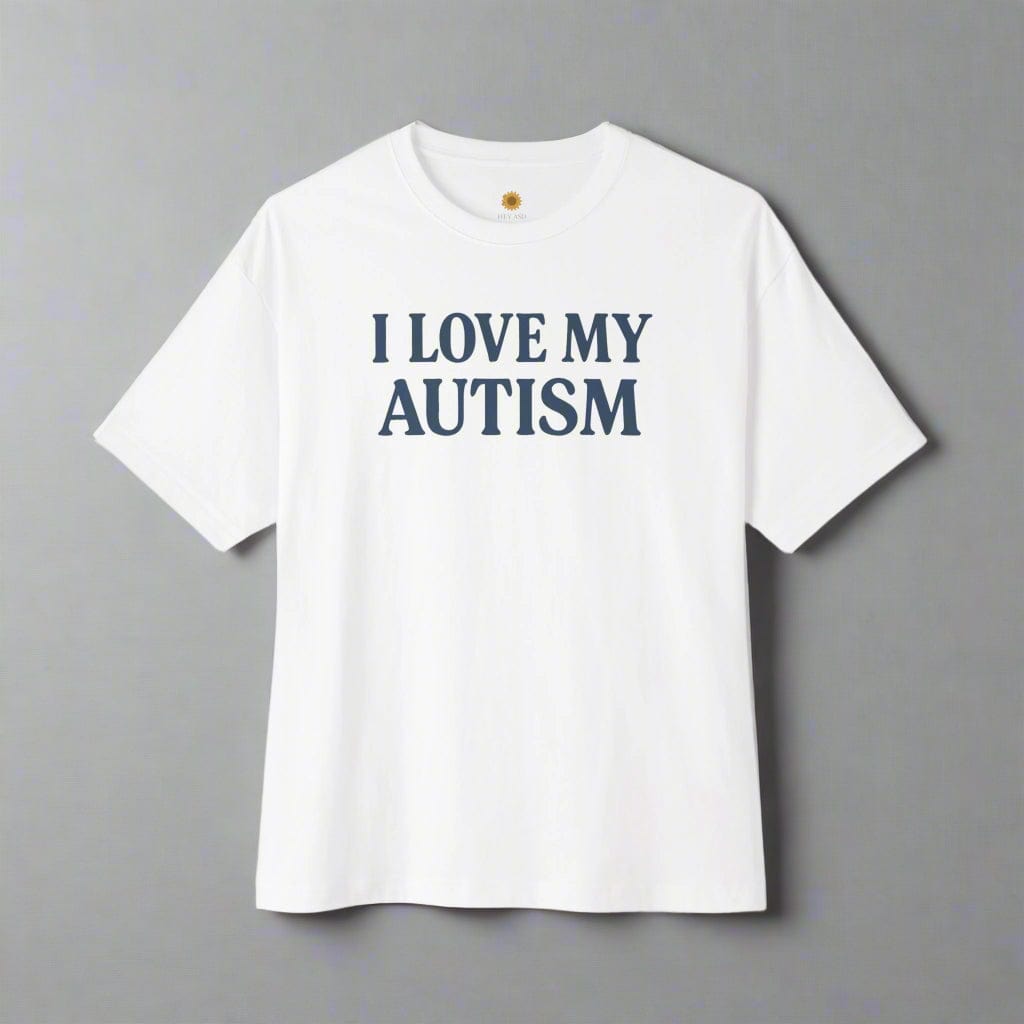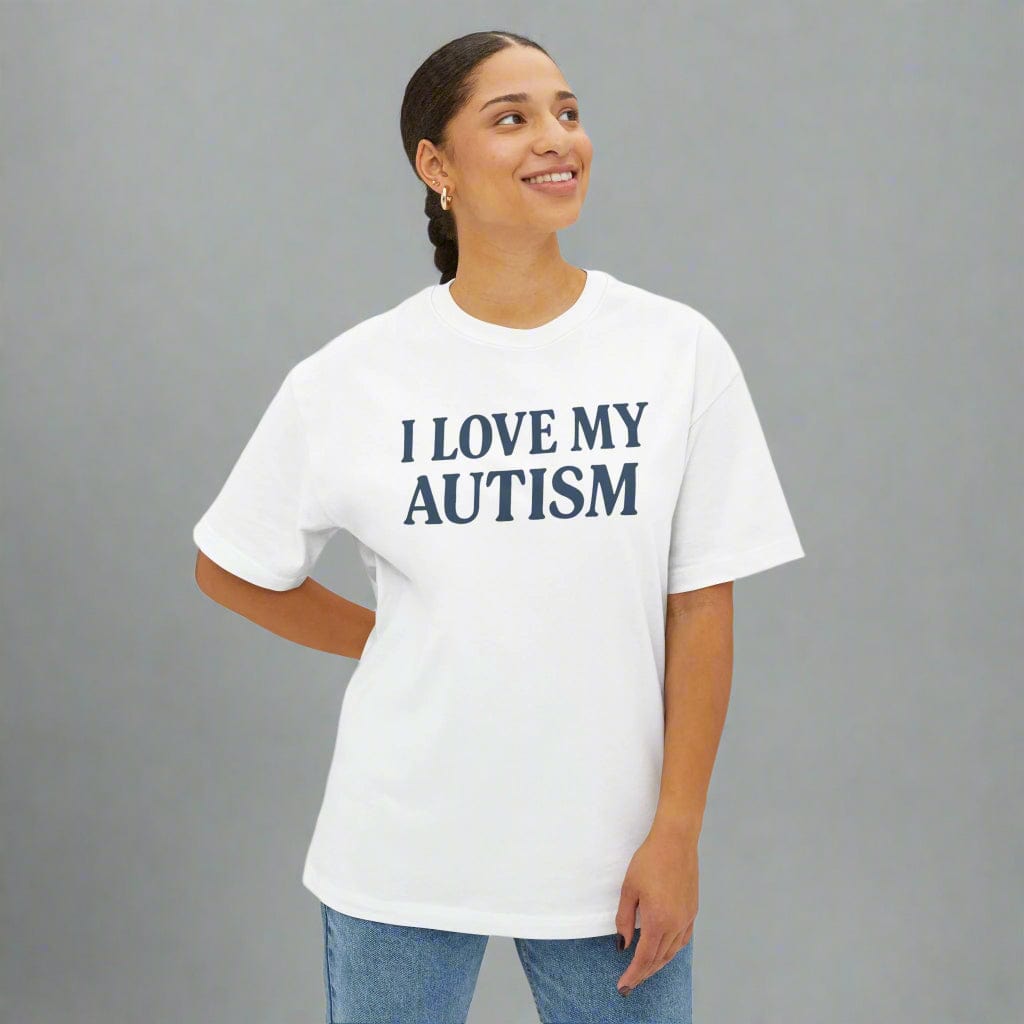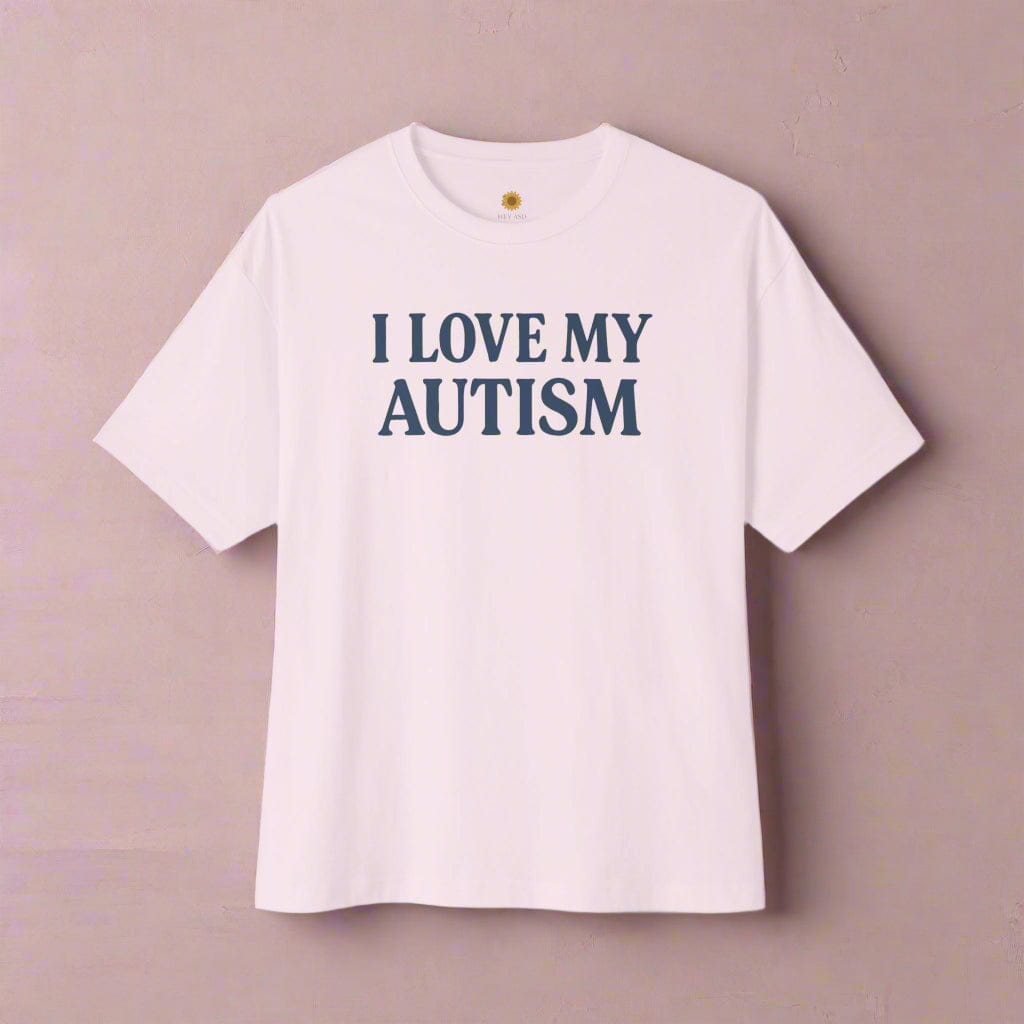How to Unmask Autism: A Gentle Guide to Reclaiming Your Authentic Self

Written by the HeyASD Editorial Team
This guide explores what autism masking is, why it happens, and gentle, research-based ways to begin unmasking safely — written by and for autistic adults.
For years, you may have learned to hide. To smile when you were melting inside, to force eye contact that felt painful, or to suppress the movements that calmed your body. This is called masking. Unmasking autism means gently letting go of the survival strategies that helped you fit in but kept you from being your authentic self. It is a brave and personal journey toward self-acceptance. For many autistic people, finally taking off the mask feels like coming home to themselves after being away for a long, long time.
Understanding Autism Masking: What It Means
Autism masking, also known as camouflaging, is the conscious or unconscious effort to hide your natural autistic characteristics to fit in with neurotypical social expectations. It is a coping strategy many autistic people learn to feel safer in a world that often misunderstands autistic behaviors. You might mimic others' facial expressions, suppress stimming, or force yourself through uncomfortable small talk.
The process of unmasking is about slowly dismantling these behaviors to live more authentically. It’s important because the energy spent on masking can be immense, and letting it go frees you to connect with your true self and others in a more genuine way. This journey allows you to honor your needs instead of suppressing them for someone else’s comfort.
The Origins of Masking for Autistic People
Many autistic people learn to mask from a very young age. You might have received subtle (or not-so-subtle) messages from parents, teachers, or peers that your natural behaviors were "wrong" or "weird." This social pressure teaches you to hide parts of yourself to avoid judgment, bullying, or negative attention. You learned that conforming was a way to stay safe and feel a sense of belonging.
This is especially true for autistic women and gender-nonconforming individuals, who often face greater societal pressure to be socially adept. Research shows that these gender differences in masking can lead to late-diagnosed autism or misdiagnosis, as the underlying autistic traits are so well hidden. Many autistic people don't even realize they are masking because it has become second nature.
Unmasking involves untangling these deeply ingrained behaviors. Understanding where your mask came from is the first step toward better mental health and well-being, as you learn to accept the person you were all along.
“For years, I thought I was just shy or broken. Learning about masking felt like finding the missing chapter of my life story.”
Common Examples of Masking in Everyday Life
Masking behaviors can be subtle and happen so automatically that you may not even notice you're doing them. They are the small adjustments you make to appear more like neurotypical people in social situations. Recognizing these is a key step in your unmasking journey. Do you ever feel like you're playing a character designed to make others feel more comfortable?
These masking behaviors often require a lot of energy and can feel incredibly draining. Some common examples of what camouflaging your autistic traits might look like include:
-
Forcing or faking eye contact during conversations even when it feels uncomfortable or distracting.
-
Suppressing stimming behaviors, such as hand-flapping, rocking, or fidgeting, in public.
-
Scripting and rehearsing conversations in your head before they happen.
-
Hiding your special interests to avoid judgment or pretending to enjoy topics that others like.
This constant performance can make it difficult to know who you really are underneath the mask. The Camouflaging Autistic Traits Questionnaire (CAT-Q) is one tool that helps measure these behaviors, but simply noticing them in your own life is a powerful start.
Why Masking Feels Necessary for Safety and Belonging
At its core, masking is a survival strategy. In a neurotypical society that often stigmatizes autistic traits, hiding them can feel like the only way to gain social acceptance and avoid negative attention. You may have learned early on that your natural way of being could lead to ostracism, verbal abuse, or being misunderstood. Masking becomes a shield, protecting you from a world not built for you.
This need for safety is even more intense for autistic people who hold multiple marginalized identities. As one source notes, “Many BIPOC individuals, women, non-binary, and queer people... choose to mask when they feel unsafe in school, the workplace, or other situations.” This adds another layer of emotional labor on top of navigating racism, sexism, or homophobia.
Your social identity becomes tied to this performance, making the thought of unmasking terrifying. The fear is that if you show your true self, you will lose your job, your friends, and your sense of belonging. Masking feels less like a choice and more like a necessity.
The Emotional and Physical Costs of Masking
While masking can feel like a necessary tool for survival, it comes at a significant price. The constant effort of suppressing your authentic self is not just tiring—it can be profoundly damaging to your mental and physical health. Over time, this intense performance leads to a state of complete exhaustion known as autistic burnout, where you lose the ability to function as you once did.
This constant vigilance can also erode your sense of identity and lead to serious mental health issues. In the following sections, we will look closer at the heavy costs of masking, from identity confusion to the chronic stress that can overwhelm your nervous system.
Autistic Burnout and Identity Confusion
Autistic burnout is a state of profound physical, mental, and emotional exhaustion that comes from the cumulative stress of trying to meet demands that are not sustainable for you. A major contributor to this is the constant pressure of masking. When you spend all your energy performing a neurotypical version of yourself, there is little left for anything else. This can impact your ability to function at work, at home, and in your relationships.
Beyond exhaustion, years of masking can lead to deep identity confusion. If you have been pretending to be someone else for most of your life, you might genuinely not know who you are underneath. As one autistic woman, Ella, shared, "I’m learning who I am underneath the mask, because every aspect of my identity was influenced by wanting to do and be whatever person would be acceptable to the world."
This loss of your sense of self is a painful consequence of identity management. For late-diagnosed autistic adults, receiving a diagnosis can be the key that finally explains this feeling of inauthenticity and opens the door to rediscovering your true self.
Chronic Stress, Anxiety, and Exhaustion
Masking puts your nervous system in a constant state of high alert. You are always monitoring your behavior, suppressing your natural impulses, and trying to interpret social cues. This sustained effort is a recipe for chronic stress. Your body is flooded with stress hormones like cortisol, which can lead to physical health problems over time, including digestive issues and a weakened immune system.
This heightened state of vigilance often manifests as anxiety and depression. The fear of your mask slipping or being "found out" creates a persistent, low-level panic. For many autistic adults, anxiety is not just a feeling but a constant companion, fueled by the exhausting work of appearing "normal."
The mental health outcomes linked to masking are serious. Studies have consistently shown that camouflaging is associated with higher rates of anxiety, depression, and even suicidal thoughts. It is an unsustainable way to live, and the exhaustion it causes is a clear signal that something needs to change.
When Coping Mechanisms Become Barriers to Authenticity
Masking often begins as a helpful coping mechanism. It allows you to navigate school, get a job, or make friends in a world that wasn't designed for you. In the short term, it works. However, over a lifetime, this strategy can turn into a significant barrier that prevents you from living as your authentic self. The mask that once protected you now keeps you from forming real connections.
When you are always performing, others don't get to know the real you. Friendships can feel shallow because they are built on a persona, not on genuine shared values or interests. This can lead to profound loneliness, even when you are surrounded by people. You might feel like an actor on a stage, disconnected from the very people you are trying to connect with.
“The scariest part wasn’t taking off the mask — it was realizing how heavy it had become.”
Ultimately, these negative outcomes show that what started as a tool for survival has become a cage. It erases your true identity and blocks the path to self-acceptance and genuine happiness. Unmasking is the process of breaking down that barrier to find the real you.
Unmasking Autism: Why It Matters
Unmasking is more than just stopping a behavior; it is an act of self-reclamation. It matters because it allows you to finally live in alignment with your authentic self, which is crucial for your mental health. When you stop pouring all your energy into hiding your autistic traits, you free up that energy for joy, rest, and pursuing your special interests.
For many autistic individuals, unmasking is a life-changing journey toward self-acceptance and deeper well-being. The following sections will explore how this process can help you move from a state of survival to one of thriving, embracing the power of your neurodivergent identity.
Moving From Survival to Self-Aceptance
A journey toward self-acceptance can feel daunting, especially after years of masking. The gradual shift from survival strategies to embracing your true self involves recognizing and honoring your needs. This process requires creating safe spaces, where you can express your authentic feelings without fear of judgment. As you learn to shed camouflage behaviors, consider reconnecting with your special interests and stimming, essential aspects of your identity. By nurturing these elements, clarity emerges, guiding you toward genuine acceptance and comfort in your own skin.
The Power of Authenticity and Neurodivergence
Embracing your authentic self is one of the most powerful things you can do for your well-being. For neurodivergent people, authenticity means allowing your unique way of thinking, feeling, and experiencing the world to shine through. It is about understanding that your autistic brain is not a deficit to be hidden but a different, valid way of being.
When you stop masking, you create space for your true self to emerge. You might rediscover hobbies or special interests you abandoned because you thought they were "weird." You might find that your direct communication style, once a source of anxiety, is actually a strength that fosters honesty and clarity in your relationships. Your sense of self becomes stronger and more resilient.
Living authentically allows you to contribute your unique perspective to the world. Neurodivergence is a vital part of human diversity, and when you embrace it, you not only improve your own life but also help create a more inclusive society for all neurodivergent people.
Reclaiming Joy, Peace, and Real Connection
One of the greatest rewards of unmasking is the return of joy and peace to your life. When you are not spending all your energy on social performances, you have more capacity for things that genuinely make you happy. Social interactions become less draining because you are being yourself, allowing for real connection instead of performative pleasantries.
You can begin to build relationships based on who you truly are. This might mean some relationships change or fall away, but the ones that remain will be deeper and more authentic. You can set boundaries that protect your energy and only engage in social activities that align with your comfort levels. You can go at your own pace.
Parents and caregivers can support this process by creating an environment of unconditional acceptance. Instead of encouraging conformity, they can celebrate an autistic person's unique traits and honor their need for rest and quiet. This validation is crucial for reclaiming a sense of safety and peace.
How Do You Unmask Autism? Gentle First Steps
The idea of unmasking can feel overwhelming, especially if you have been wearing a mask for a long time. The key is to remember that this is not a race. You can take gentle first steps in a way that feels safe for you. The unmasking process is a gradual journey of rediscovery, not an instant reveal.
It starts with building awareness and finding safe spaces where you can experiment with being your unmasked version. The following sections offer a step-by-step approach to help you begin this journey at your own pace, honoring your comfort and your autistic ways of being.
Noticing Where You Mask—Building Awareness
The first step in any unmasking journey is to simply notice when and how you mask. Paul from Autism From The Inside suggests, "The first step to slowly safely taking the mask off is to find out for yourself who you are and what you want when you’re alone." This process of behavioral analysis begins with gentle self-observation, without judgment.
Start paying attention to the moments when you feel a disconnect between your inner feelings and your outward expression. It can be helpful to keep a journal to track your experience of masking. Ask yourself questions like:
-
In what situations do I feel most like I am performing?
-
What opinions do I agree with out loud that I don't really believe?
-
When do I force a smile or laugh to fit in?
-
Which behaviors feel exhausting but necessary in social situations?
By identifying your masking behaviors, you begin to understand the "why" behind them. This awareness is the foundation upon which you can start to make conscious choices about when and where you feel safe enough to let the mask down.
Creating Safe, Supportive Spaces For Unmasking
You do not have to unmask everywhere all at once. In fact, it is wisest to start in environments where you feel safe and supported. A safe space could be as simple as being alone in your own home. This is where you can experiment with your natural behaviors without any fear of judgment. Allow yourself to stim freely, wear your most comfortable clothes, and engage deeply in your special interests.
Once you feel more comfortable alone, you can gradually expand your unmasking to include a trusted person, like a close friend, partner, or therapist. Choose someone who you believe will be accepting and understanding. You can explain what you are doing if you feel comfortable, or you can simply allow yourself to be a little more authentic and see how it feels.
Building a support network is crucial. This journey can be challenging, and having people who validate your experience makes all the difference. Remember to go at your own pace. The goal is to create pockets of safety where your unmasked self can breathe. In the United States and online, there are many communities where you can find this support.
Listening to Your Body’s Stimming and Sensory Needs
A huge part of masking involves suppressing your body's natural responses to the world. Unmasking means learning to listen to those responses again. Your body has been telling you what it needs all along; now it's time to honor it. This is especially important for stimming and sensory needs, which are often the first things autistic people are taught to hide.
Stimming, or self-stimulatory behavior, is a natural way for autistic people to regulate their emotions and nervous system. It is not something to be ashamed of. Allow yourself to engage in your natural behaviors.
-
If you need to flap your hands, rock, or fidget, let yourself do it. Keep a fidget toy in your bag if it helps you focus.
-
Pay attention to your sensory profile. If bright lights, loud noises, or certain textures are overwhelming, give yourself permission to avoid them or use tools like sunglasses, noise-canceling headphones, or sensory-friendly autism hoodies.
This is not about being difficult; it is about self-care. Many autistic women, in particular, have learned to endure extreme sensory discomfort to appear "professional" or "polite." Reconnecting with your body's signals is a radical act of self-compassion.
Practical Strategies for Starting Your Autism Unmasking Process
Once you have built some awareness and identified safe spaces, you can begin to put your autism unmasking process into practice. This involves more than just dropping behaviors; it is about actively building a life that supports your authentic self. For many late-diagnosed autistic adults, this can feel like learning a whole new way of being.
The following strategies offer concrete ways to start this work. From trying small experiments with being yourself to communicating boundaries and creating comforting routines, these steps can help you move forward with confidence.
Trying New Behaviors: Small Experiments With Truth
Dr. Devon Price, author of "Unmasking Autism," suggests thinking of unmasking as a series of small experiments. Instead of taking the mask off all at once, you can slowly adjust the "filter" and let more of your authentic self show. This approach makes the process feel less daunting and more manageable.
You can start by picking one of your masking behaviors and designing a small experiment around it in a safe setting. For example:
-
The Experiment: Not forcing eye contact in a conversation with a trusted friend.
-
The Goal: To see how it feels to look where you are comfortable and whether your friend even notices or cares.
-
The Reflection: Afterward, think about how it went. Did you feel less drained? Were you able to concentrate better on the conversation?
By trying these small experiments, you gather evidence that being your true self is not as dangerous as you feared. Each successful experiment builds your confidence to try dropping other aspects of masking. Remember to honor your own needs and go at a pace that feels right for you.
Communicating Boundaries & Needs Clearly
A critical part of unmasking is learning to communicate your needs and set boundaries. For many autistic people, this can be incredibly difficult, as we have often been taught to prioritize others' comfort over our own. However, setting boundaries is not selfish; it is a necessary act of self-preservation that creates a more sustainable and comfortable environment for you.
You do not have to provide a long explanation or disclose your autism diagnosis to set a boundary. Simple, direct statements are often the most effective. For example, you could say, "I need a few minutes alone to recharge," or "Eye contact is uncomfortable for me, but please know I am listening."
Learning to say "no" to social invitations that you know will be draining is another powerful boundary. You can decline without apology, or offer an alternative that works better for you, like meeting one-on-one instead of in a large group. Consistently communicating your boundaries teaches others how to treat you and reinforces the message that your own needs are valid.
Setting Up Routines That Comfort Your Neurodivergent Identity
Routines can be incredibly comforting for neurodivergent people, but often the routines we build are designed to help us cope with a neurotypical world. A powerful part of unmasking is creating new routines that are designed to comfort and support you. These sensory-friendly routines can help you conserve energy and create a predictable, soothing structure for your day.
Think about what truly makes you feel regulated and at peace. Your new routines could include:
-
Scheduling dedicated "downtime" after social events to recover your energy.
-
Building time into your day for your special interests, treating them as a priority rather than a guilty pleasure.
-
Creating a sensory-friendly morning or evening ritual, perhaps involving soft lighting, a weighted sensory blanket, or your favorite music.
By intentionally designing your days around your comfort levels, you are actively choosing to honor your neurodivergent identity. This practice helps reduce stress and makes it easier to show up as your authentic self in other areas of your life.
“Unmasking isn’t rebellion. It’s rest — the quiet kind that lets you finally breathe in your own rhythm.”
Navigating Challenges on Your Unmasking Journey
The journey of unmasking is not always easy. As you begin to show your authentic self, you may encounter challenges that can be emotionally difficult. It is common to experience a fear of rejection, see changes in your relationships, and even grieve for the years you spent hiding. This is all a normal part of the process.
Knowing what to expect can help you navigate these hurdles with self-compassion. The following sections explore some of the common challenges autistic adults face during autistic burnout recovery and unmasking, offering reassurance that you are not alone in these feelings.
The Fear of Rejection & Changing Relationships
One of the biggest obstacles to unmasking is the intense fear of rejection. What if people don't like the real you? This is a valid concern, especially if your relationships were built around your masked persona. As you start to set boundaries, communicate your needs directly, or stop pretending to share others' opinions, some people in your life may react negatively.
It is true that some relationships may change or even end. As one late-diagnosed autistic adult, Katie, explains, “As you unmask, it gets a lot easier to see who is genuine with you and who isn’t… because unmasking typically repels all the people who only want the masked you.” This can be painful, but it also clears the way for more authentic connections.
The people who truly care about you will be happy you are being true to yourself, even if it takes them time to adjust. The "double empathy problem" suggests that misunderstandings between autistic and non-autistic people go both ways. Clear communication can help bridge that gap in changing relationships.
Working Through Grief About Lost Time and Missed Selves
For many late-diagnosed autistic adults, unmasking can bring up a profound sense of grief. You might grieve for the years you spent feeling like you didn't fit in, without knowing why. You may mourn the "missed selves"—the person you could have been if you had been allowed to be authentic from a young age. It is okay to feel sad about this lost time.
These feelings are a natural and valid part of the process. You might wonder what your life would have been like if you had known you were autistic sooner. It is important to allow yourself to feel this grief without judgment. You have been through a lot, and acknowledging that pain is a step toward healing.
Remember this: you haven't wasted time—you have survived. The mask was a tool that helped you get through a world that was not ready for you. Now, you have the opportunity to live the rest of your life with more authenticity and self-compassion.
Self-Compassion in Times of Autistic Burnout Recovery
Unmasking is often intertwined with autistic burnout recovery. When you are recovering from burnout, your energy is extremely limited, and the thought of navigating social changes can feel overwhelming. This is a time when self-compassion is not just helpful—it is essential. Be gentle with yourself. You do not need to rush this process.
Self-compassion means accepting that it is okay to rest, to have low-capacity days, and to prioritize your well-being above all else. It is about treating yourself with the same kindness you would offer a friend.
-
Give yourself permission to do less.
-
Celebrate small steps forward, no matter how tiny.
-
Remember that healing is not linear; there will be good days and bad days.
If you are struggling, it is a sign of strength to seek support. Finding mental health professionals, like a neurodiversity-affirming therapist or coach, who understand the autistic experience can provide you with tools and validation to navigate your recovery with greater ease.
Signs of Progress: How Do I Unmask My Autism Successfully?
How do you know if your unmasking journey is moving in the right direction? Success is not about being perfectly unmasked all the time. It is about feeling a greater sense of peace, authenticity, and daily comfort in your own skin. The signs of progress are often subtle feelings rather than dramatic changes.
You will likely notice a shift in your energy levels and your emotional state after social events. The following sections will highlight some of the key indicators that you are successfully learning how to unmask your autism, such as feeling calmer and embracing downtime without guilt.
Feeling Calmer After Social Interactions
One of the most noticeable signs of successful unmasking is a change in how you feel after a social interaction. When you are heavily masking, social events can be incredibly draining. You might leave a party or a meeting feeling completely depleted, needing hours or even days to recover. This is because you have spent all your energy on performing.
As you begin to unmask, you will likely notice that you feel calmer and less exhausted after being with people. By allowing yourself to be more authentic—whether by not forcing eye contact, being honest about your energy levels, or simply not faking enthusiasm—you conserve a significant amount of mental energy.
This does not mean you will suddenly become an extrovert. You will still need downtime to recharge. However, the social hangover will be less intense. Better mental health outcomes are a direct result of no longer pushing your nervous system to its breaking point just to meet others' comfort levels.
Embracing Downtime, Hobbies, and Daily Comfort
Another clear sign of progress is how you treat yourself in your non-social time. Successful unmasking leads to a deeper appreciation for your own needs, including the need for rest and joy. You will start to embrace downtime without feeling guilty, recognizing it as essential for your well-being.
You may also find yourself rediscovering hobbies and special interests that you had set aside. When you are not using all your energy to mask, you have more capacity to engage with the things that truly fascinate and fulfill you. This is a beautiful part of reconnecting with your authentic self. Signs that you are embracing your daily comfort include:
-
Allowing yourself to spend hours engrossed in a special interest without feeling unproductive.
-
Choosing comfortable clothing, like soft autism hoodies or tees, over what is considered socially "appropriate."
-
Going at your own pace and not pushing yourself to keep up with neurotypical expectations.
Finding Support and Building Community
You do not have to go on this unmasking journey alone. In fact, finding a supportive community is one of the most powerful things you can do. Connecting with other autistic adults can provide the validation and understanding that is often missing from neurotypical relationships. These neurodivergent spaces are where you can truly be yourself without fear of judgment.
Building a support network is essential for navigating the challenges and celebrating the victories of unmasking. The following sections will guide you on how to find your people and seek the right kind of professional help.
Connecting With Other Autistic Adults and Allies
Connecting with other autistic adults is a game-changer. For the first time, you may feel truly seen and understood. In these spaces, you do not have to explain why you need to stim, why you find small talk exhausting, or why certain sensory inputs are overwhelming. Other autistic people just get it. This shared understanding can be incredibly healing and validating.
Dr. Devon Price strongly encourages joining neurodivergent communities, as they can help you remember who you were before you started masking. When you see others unmasking and living authentically, it gives you permission to do the same. Many autistic people feel a sense of relief and belonging they have never experienced before. Ways to find your community include:
-
Social Media: Platforms like Instagram, TikTok, and Twitter have vibrant autistic communities.
-
Online Forums: Websites and forums dedicated to autism or your special interests can connect you with like-minded people.
-
Local Meet-ups: Search for autistic or neurodivergent social groups in your area.
Seeking Validation From Neurodivergent Spaces
Neurodivergent spaces offer a powerful antidote to a lifetime of feeling "wrong" or "broken." In a world that constantly asks you to change, these communities provide a space where you are accepted exactly as you are. This validation is crucial for building self-esteem and confidence in your authentic self. It helps reinforce the message that your own needs are valid and important.
When you share an experience and someone replies, "Me too!" it dissolves the sense of isolation that so many autistic people carry. You learn that your struggles are not personal failings but common experiences within the autistic community. This shared understanding fosters positive mental health and gives you the strength to continue on your unmasking journey.
These spaces can also be a source of practical advice and support. Whether you need tips for navigating the workplace or just someone to listen, your neurodivergent peers can offer insights that neurotypical people might not have.
Professional Help: Therapists Experienced With Autism Unmasking
While community support is invaluable, sometimes you may need professional guidance. Seeking help from a therapist who is experienced with the autism unmasking process can provide a structured and supportive environment for your journey. It is important to find mental health professionals who are neurodiversity-affirming and will not try to teach you more masking techniques.
A good therapist can help you navigate the complex emotions that come with unmasking, such as grief, anxiety, and identity confusion. They can also help you develop practical strategies for setting boundaries and communicating your needs. The right professional support can make your unmasking journey feel safer and less overwhelming. Look for professionals such as:
-
Neurodiversity-Affirming Therapists: They understand and respect autistic ways of being.
-
Occupational Therapy (OT) Specialists: An OT can help with sensory integration and creating supportive routines.
-
Autistic Coaches: Many autistic adults offer coaching to help peers navigate their unmasking journey.
A formal autism diagnosis can also be a validating step that provides access to a stronger support network.
Risks and Rewards of Unmasking in Social and Work Environments
The decision to unmask is personal and depends heavily on the social context. While unmasking can be liberating, it is important to acknowledge that it carries risks, especially in environments that are not accepting or supportive, such as the workplace. You must prioritize your own safety.
However, the rewards of being more authentic at work can include reduced stress and better workplace accommodations. The following sections will explore how to navigate these environments, weigh the risks, and advocate for your own needs safely.
Navigating Workplace Sensitivities and Workplace Accommodations
The workplace can be one of the most challenging places to unmask. Many neurotypical adults in professional settings have rigid expectations for social skills and behavior. Unmasking completely may not feel safe or possible. In these situations, strategic or partial unmasking might be a better approach. You can choose which autistic traits to reveal and which to keep private.
Another option is to formally request workplace accommodations. This may or may not involve disclosing your diagnosis. Accommodations can create an environment that supports your needs without you having to unmask completely. For example, you could request written instructions instead of verbal ones or ask for a quieter workspace. Occupational therapy can often help identify and advocate for these needs.
Here is how different approaches might look in the workplace:
|
Workplace Challenge |
Masked Approach |
Unmasked/Accommodated Approach |
|---|---|---|
|
Noisy Open Office |
Enduring the noise, leading to burnout. |
Wearing noise-canceling headphones or requesting a quieter desk. |
|
Vague Instructions |
Guessing what's expected, causing anxiety. |
Asking for clear, written instructions and deadlines. |
|
Forced Small Talk |
Scripting conversations, feeling drained. |
Politely excusing yourself or finding a task-focused role. |
|
Back-to-Back Meetings |
Pushing through exhaustion. |
Requesting breaks between meetings to recharge. |
How to Stop Masking Autism Safely Around Family
Unmasking around family can be complicated. These are often the people who have known you the longest, and they may be used to your masked persona. Their emotional reactions can be difficult to navigate. The key is to approach this process slowly and with clear communication.
You do not have to have one big "reveal." Instead, you can start by making small changes and explaining them as they come up. For example, you could explain that you are trying to honor your energy levels more. Megan Griffith, a neurodivergent life coach, suggests explaining to loved ones what masking is, why you did it, and how things might change as you unmask.
Here are some gentle ways to start:
-
Set Boundaries on Social Time: Let them know you can only stay for an hour or that you need quiet time during a family gathering.
-
Communicate Your Needs: Say things like, "I find the loud music a bit much, I'm going to step outside for a bit."
-
Be Your Authentic Self: Allow yourself to not smile if you don't feel happy or to talk about a special interest you truly love.
Remember, you cannot control how your family will react, but you can control how you advocate for your own comfort levels.
Advocating for Yourself Without Explaining Everything
A common fear about unmasking is that you will constantly have to explain yourself or disclose your autism diagnosis. The good news is, you don't. You have the right to state your needs and set boundaries without providing a detailed justification. Self-advocacy can be simple and direct.
The goal is to communicate your need, not to defend it. You can use clear, unapologetic language that focuses on the action or accommodation you require in a specific social context. For example, instead of explaining why eye contact is hard, you can simply say, "I can focus better on what you're saying when I'm not making eye contact."
This approach puts the focus on the solution rather than the "problem." It allows you to advocate for your own needs in a way that feels empowering and maintains your privacy. Learning a few key phrases can make a big difference in navigating daily interactions with more ease.
Living More Authentically After Unmasking
Unmasking is not the end of the journey; it is the beginning of a new way of life. Living more authentically means continuing to build a life that aligns with your true self. It is about redefining what personal success means to you and creating sustainable habits that support your neurodivergent mind and body.
This final chapter in your unmasking guide will explore how to embrace this new way of being. For neurodivergent people, this means celebrating your unique strengths and creating a future filled with genuine peace and self-worth.
Redefining Personal Success and Self-Worth
For a long time, you may have defined personal success by how well you could fit in or appear neurotypical. Unmasking invites you to throw out that definition and create a new one. Authentic success is not about external validation; it is about internal peace. It is about how you feel at the end of the day, not how others perceive you.
Your self-worth is inherent and does not depend on your productivity or social skills. As you live more authentically, you can start to measure success in new ways. These new metrics might include:
-
How much joy you experienced today.
-
Whether you honored your sensory needs and energy limits.
-
If you made time for your special interests.
-
Feeling at peace in your own company.
This shift in perspective is liberating. It allows you to build a life that is meaningful to you, at your own pace, without the constant pressure to perform. Your authentic self is good enough.
Building Sustainable, Sensory-Friendly Routines
To maintain your well-being after unmasking, it is crucial to build routines that are sustainable and sensory-friendly. These are not rigid schedules meant to increase productivity but flexible structures designed to provide comfort and predictability. They help you conserve energy so you have more to give to the things you love.
Take a look at your daily life and identify areas where you can build in more support for your sensory profile. Many autistic people find that having a predictable structure reduces anxiety and prevents overwhelm. Your sensory-friendly routines might include:
-
A "wind-down" hour before bed: Dim the lights, put on a weighted sensory blanket, and avoid screens.
-
Sensory-safe outfits: Choose clothes based on texture and comfort, like a favorite autism hat or soft t-shirt, not just style.
-
Scheduled "quiet time": Block out time in your calendar for being alone and recharging, even on busy days.
These routines are an ongoing act of self-care that reinforces the message that your comfort matters.
Celebrating Neurodivergence as Strength
The final step in living authentically is to move from acceptance to celebration. Your neurodivergence is not something to be tolerated; it is a source of unique strengths and perspectives. The world needs the new faces of neurodiversity. Autistic adults often possess incredible focus, a strong sense of justice, deep empathy, and a creative, out-of-the-box way of thinking.
When you unmask, you are not just helping yourself; you are helping to change the narrative around autism. You are showing the world that there is more than one right way to be. Every time you stim openly, advocate for your needs, or share your special interests with pride, you are making the world a safer and more inclusive place for all neurodivergent people.
Embrace your autistic identity as a core part of who you are. Your way of seeing the world has value. Celebrate your strengths, honor your needs, and know that your authentic self is a gift.
“Every small moment of authenticity adds up. One day, you look back and realize — you’re finally home in your own skin.”
Key Takeaways: Unmasking Autism
- Masking is survival, not failure — it’s how many autistic people stayed safe in an unaccepting world.
- Unmasking is gradual, beginning with small moments of honesty and comfort in safe spaces.
- Listening to your body—through stimming, rest, and sensory awareness—reconnects you with your authentic self.
- Community matters: being among other neurodivergent people provides validation and courage to keep going.
- Living authentically means redefining success around peace, not performance.
Conclusion
Unmasking autism is a journey back to your true self—a process of shedding the weight of expectations and survival tactics that have held you down for too long. By embracing authenticity, you not only reclaim joy and peace but also open the door to genuine connections that honor who you are at your core. Remember, unmasking isn't about becoming someone new; it’s about rediscovering the person you were meant to be before the world urged you to hide. Allow yourself the time and space needed for this transformation, and know that it's okay to navigate this path at your own pace.
Celebrate Autistic Pride
Explore our Autistic Pride Collection — gentle, sensory-friendly apparel designed to honor who you truly are.
Explore the Collection →Frequently Asked Questions
How do I know if I’m masking or unmasking my autistic traits?
To determine if you're masking or unmasking autistic traits, reflect on your comfort level in social situations. Notice whether you feel pressure to conform or if you're expressing your true self. Awareness of emotional responses and behavioral changes can also guide this understanding.
Are there any risks to unmasking in certain social situations?
Unmasking in certain social situations can lead to vulnerability, potential misunderstandings, or negative reactions from others. It's crucial to assess the environment and the individuals involved before revealing your authentic self to ensure emotional safety and support.
What support is available for late-diagnosed autistic adults on their unmasking journey?
Late-diagnosed autistic adults can access various supports, including therapy tailored to unmasking, peer support groups, and educational resources. Additionally, online communities and advocacy organizations provide valuable insights and encouragement for those embracing their authentic selves.
How can I begin to identify my true self if I've been masking my autism?
Begin by reflecting on your interests, feelings, and experiences without judgment. Journaling can help clarify thoughts. Connect with supportive communities where you feel safe to express yourself. Gradually practice authenticity in small ways, allowing your true self to emerge over time.
Are there specific strategies to help navigate social situations while unmasking?
Yes, several strategies can aid in navigating social situations while unmasking. Practicing mindfulness, setting clear boundaries, and utilizing role-playing techniques can help enhance comfort. Gradually exposing oneself to different scenarios also builds confidence, making social interactions feel more manageable and authentic.
What are the common signs of masked autism in adults?
Common signs of masked autism in adults include difficulties with social interactions, heightened sensitivity to sensory stimuli, a tendency to mimic behaviors, and feelings of anxiety or burnout. They may also struggle with emotional regulation and experience a disconnect between their true self and outward behavior.
Is unmasking autism the same as autistic burnout recovery?
No — burnout recovery often sparks unmasking, but unmasking is the ongoing practice of living authentically after years of adaptation.
On This Page
Frequently asked questions
What is autism unmasking and why is it important for mental health in autism?
How can autistic individuals safely begin the process of unmasking their autistic traits?
What are common sensory needs that should be considered in creating inclusive environments for autistic people?
How does autism unmasking contribute to embracing authenticity within neurodiversity?
What role do autism support networks play in helping individuals with unmasking and self-acceptance?
How can caregivers support autistic loved ones during the unmasking process?
What are the signs that someone might be masking their autism in social or work settings?
How can allies promote autism awareness and foster acceptance of unmasked autistic identities?
What mental health challenges are associated with prolonged masking in autistic individuals?

About the HeyASD Editorial Team
Autistic‑owned • Values‑led • Sensory‑friendly design
We are autistic creators, writers, and advocates dedicated to producing resources that are practical, sensory-aware, and grounded in lived experience. Our mission is to make information and products that support the autistic community accessible to everyone, without jargon or condescension. Learn more about our team.
This article is written from lived autistic experience and an evidence-aware perspective. It is for general informational purposes only and should not be taken as medical, legal or therapeutic advice.
Always consult a qualified clinician or occupational therapist for individual needs and circumstances.

About Our Autism Blog
HeyASD isn’t just a store, it’s a calm, supportive space created by and for autistic adults. Our blog shares sensory-friendly tips, identity-affirming stories, and heartfelt resources for navigating life as an autistic person. Whether you're late-diagnosed, exploring your needs, or supporting someone you love, you're welcome here.
Thank you for reading. We hope these resources bring comfort and clarity.













